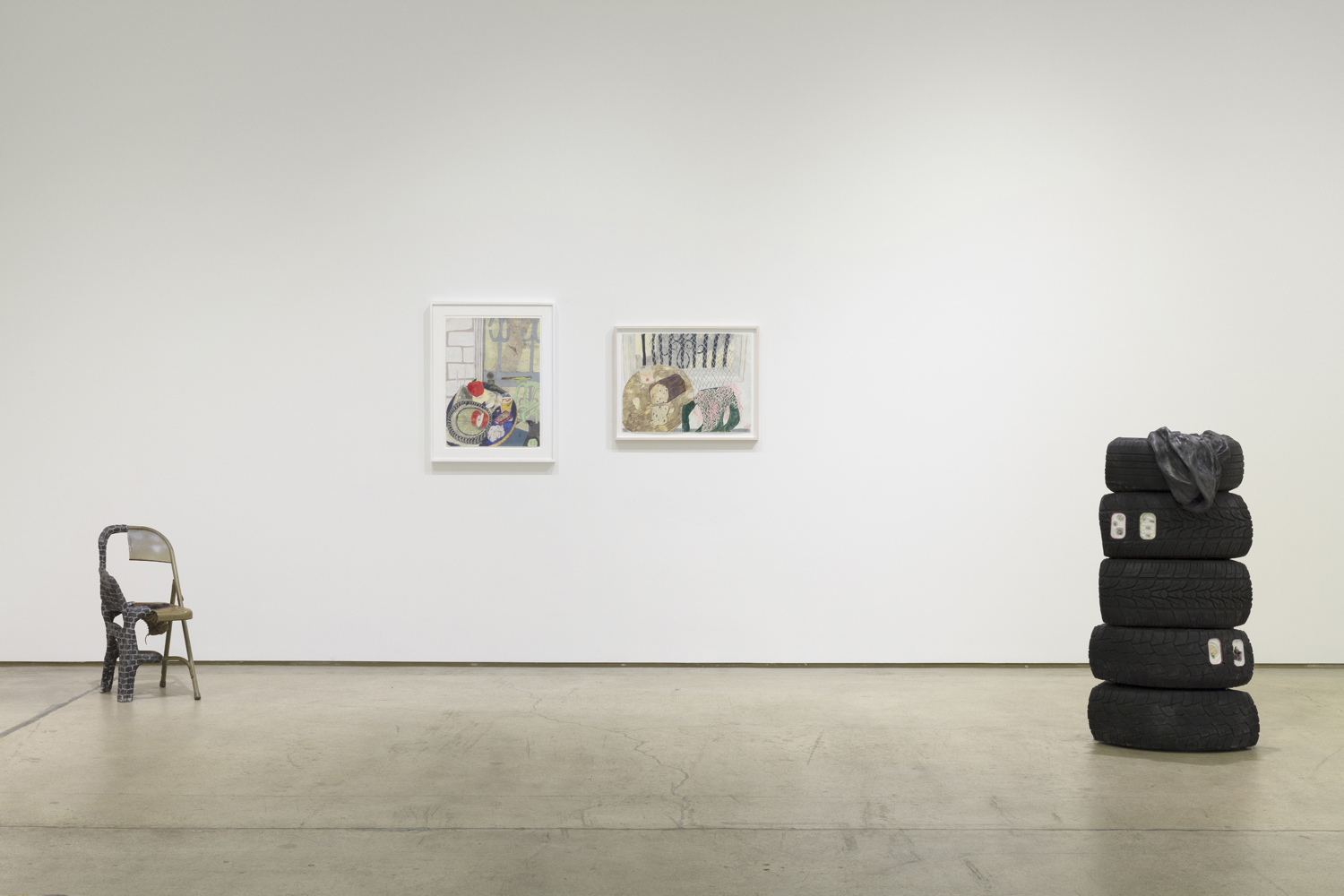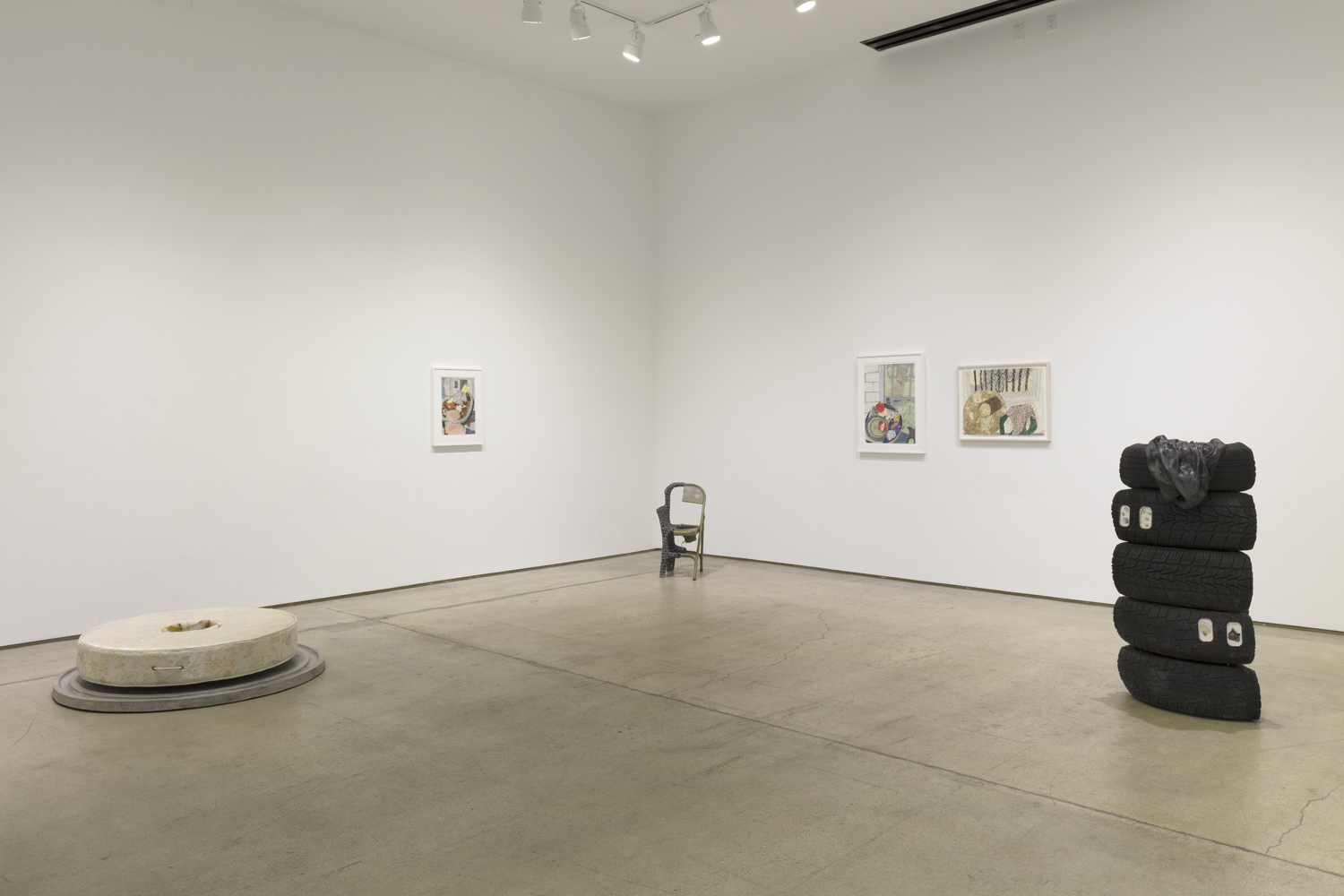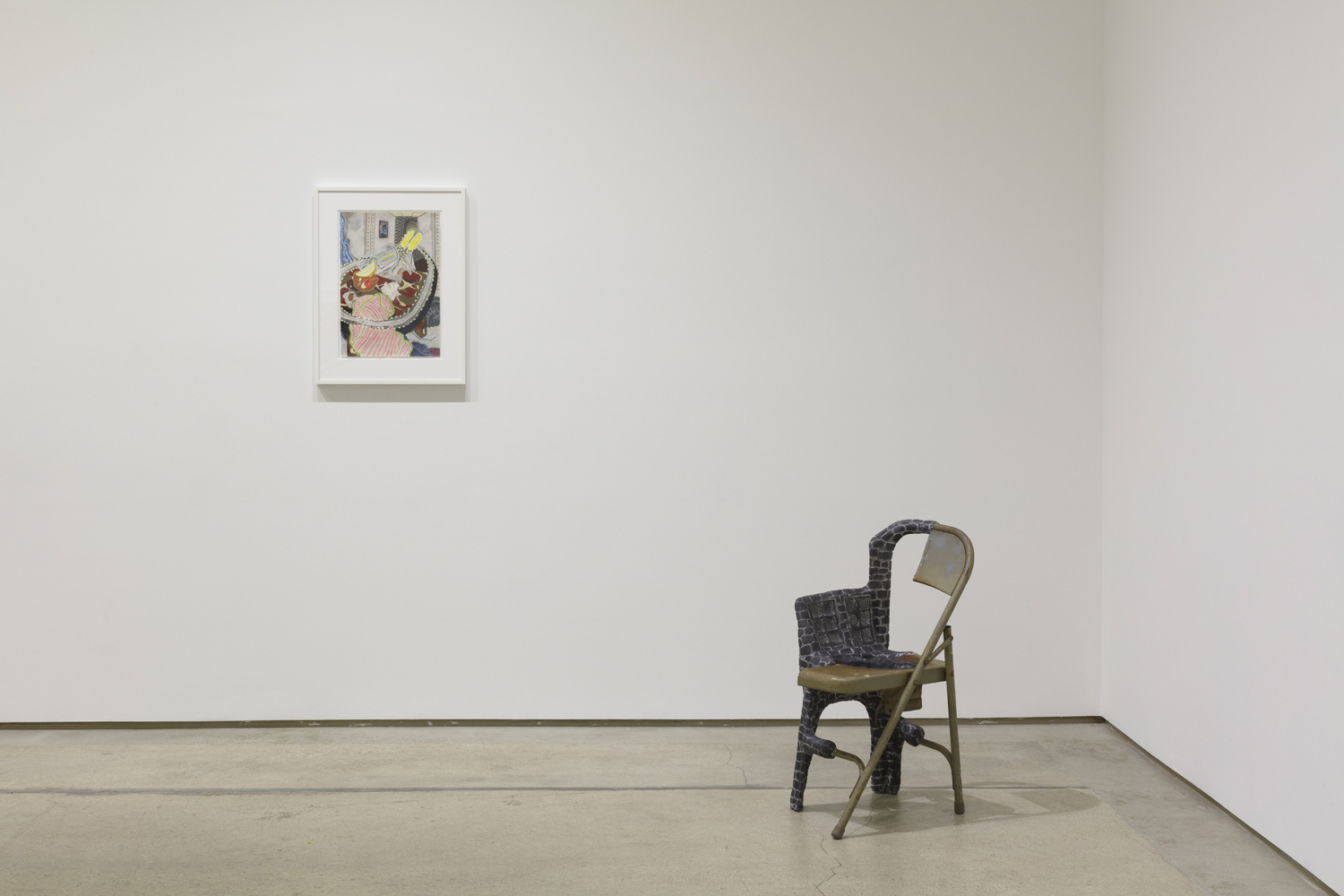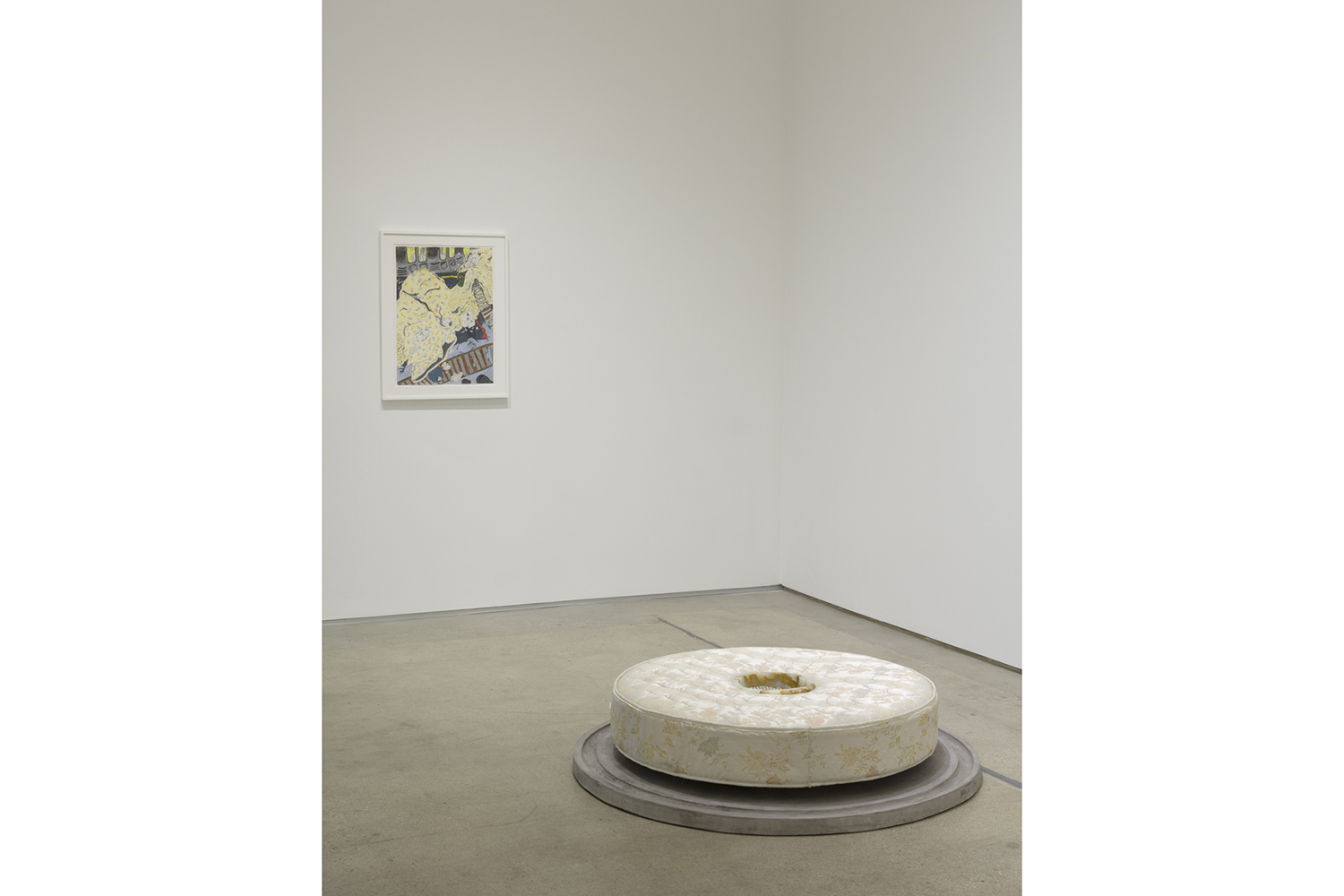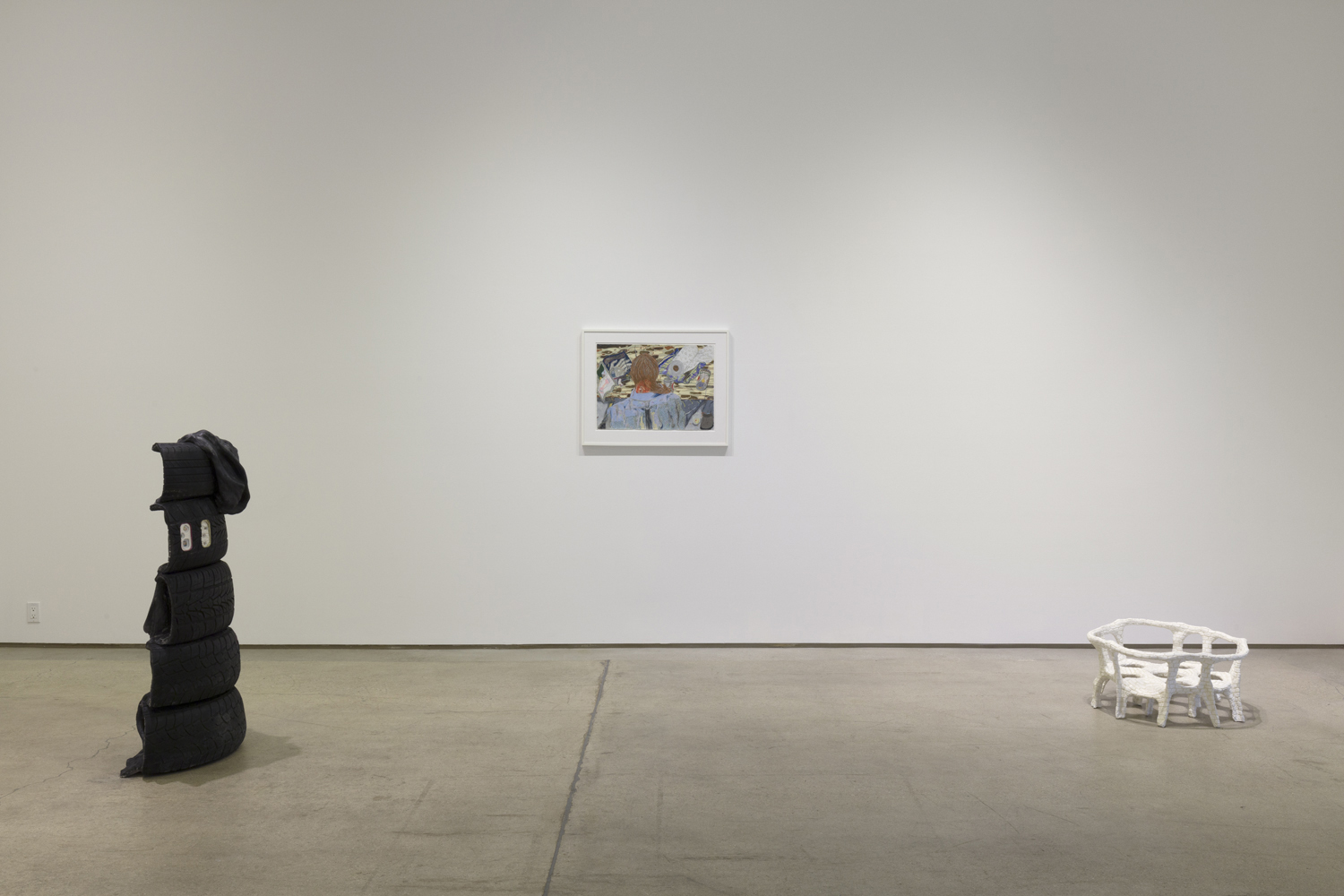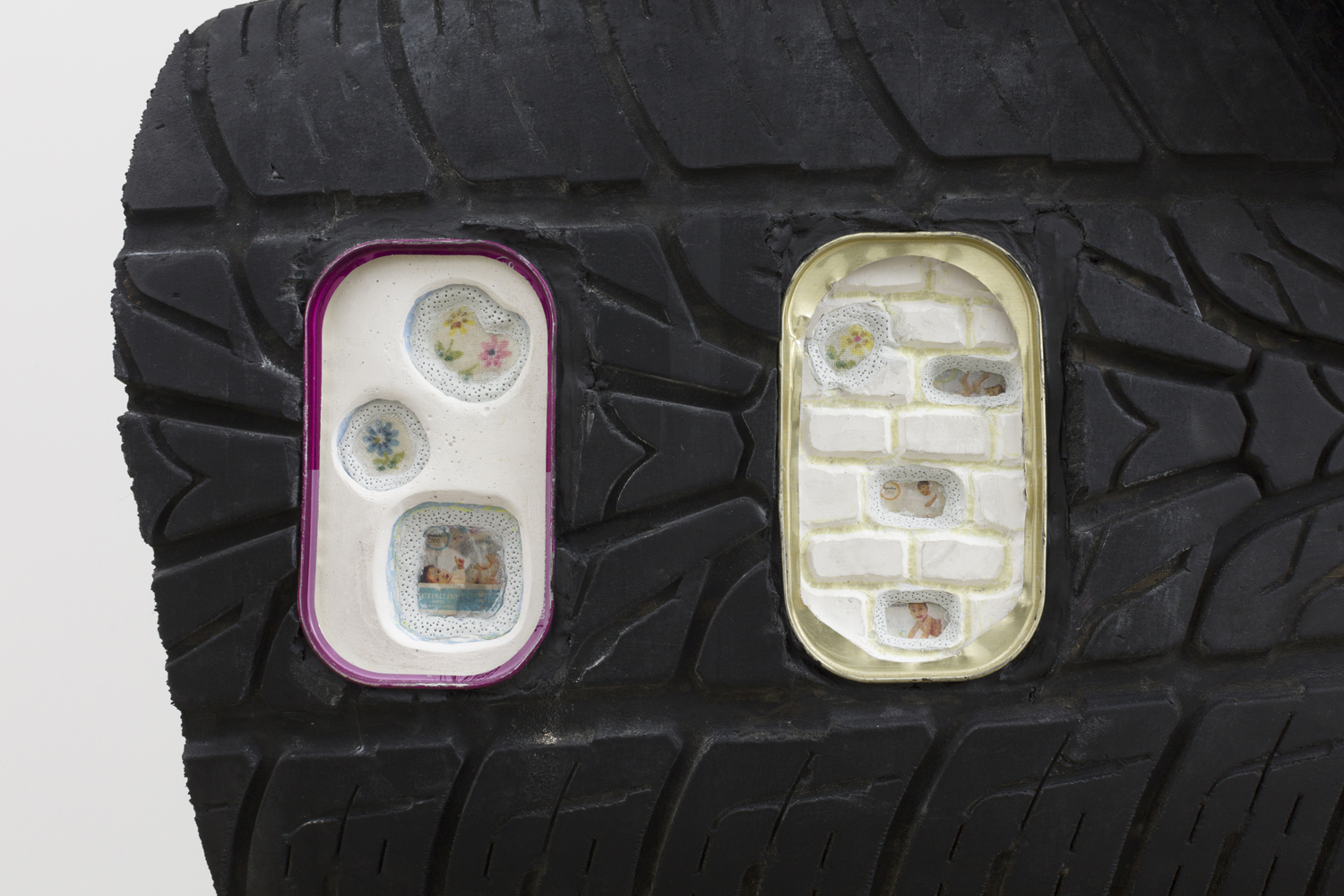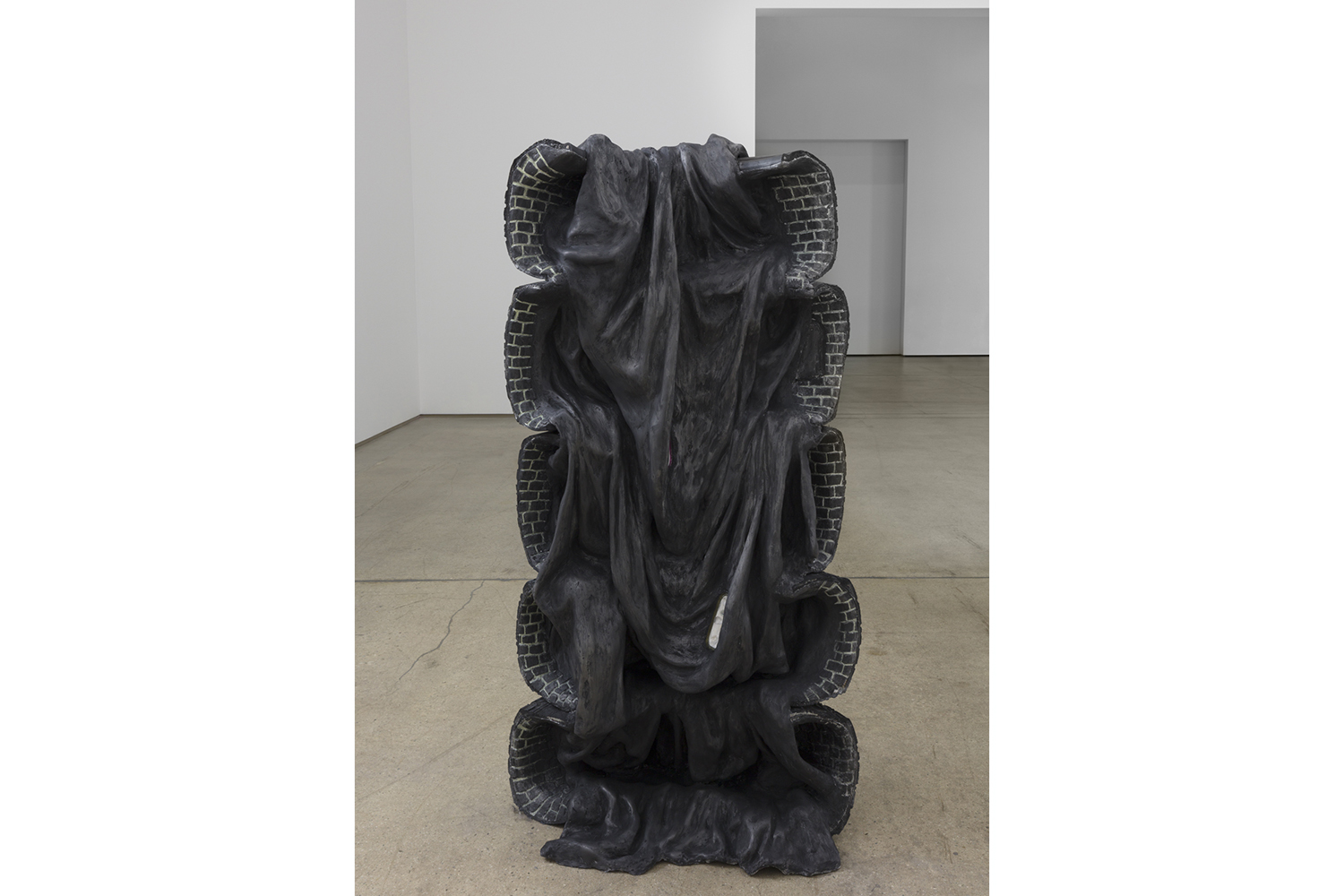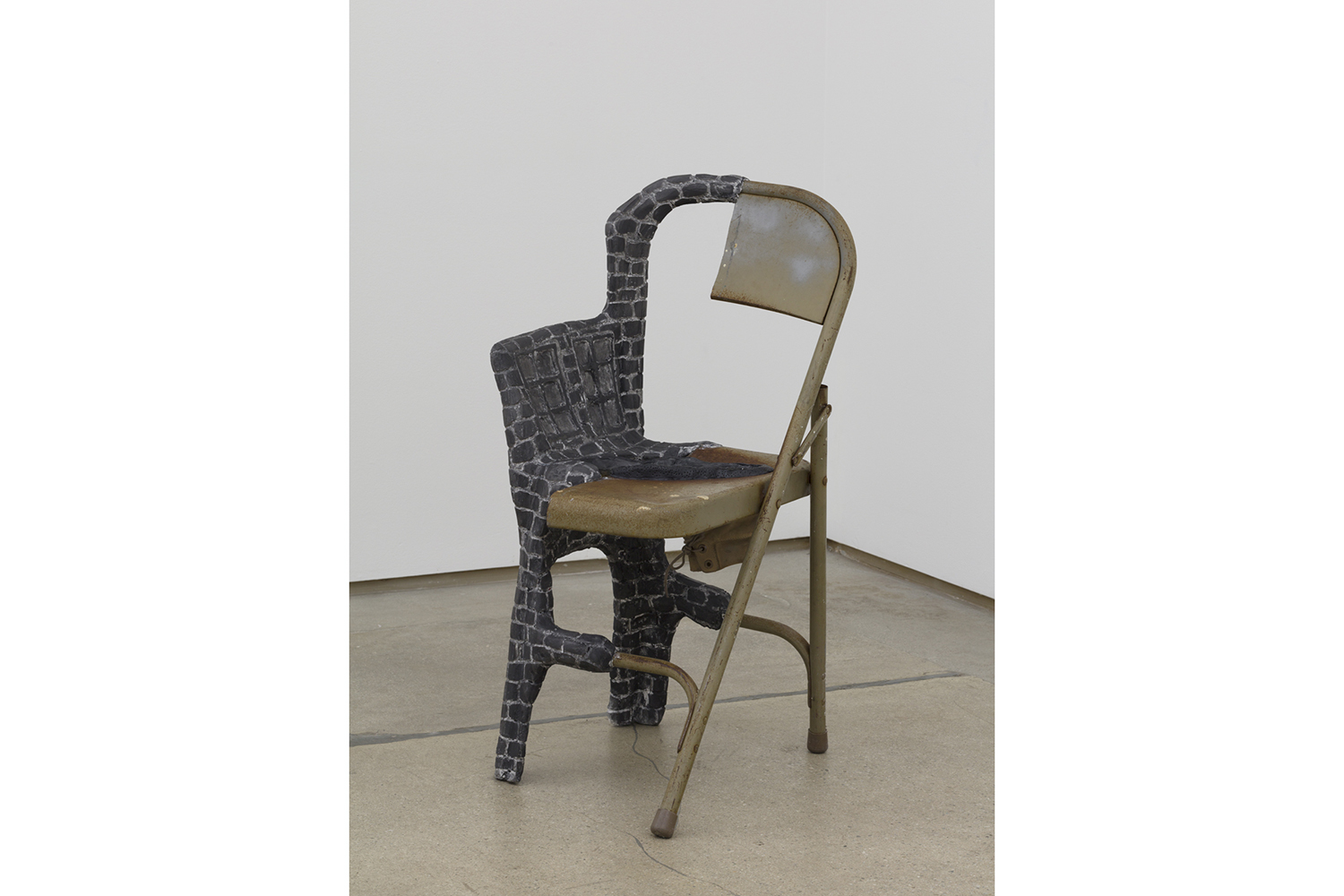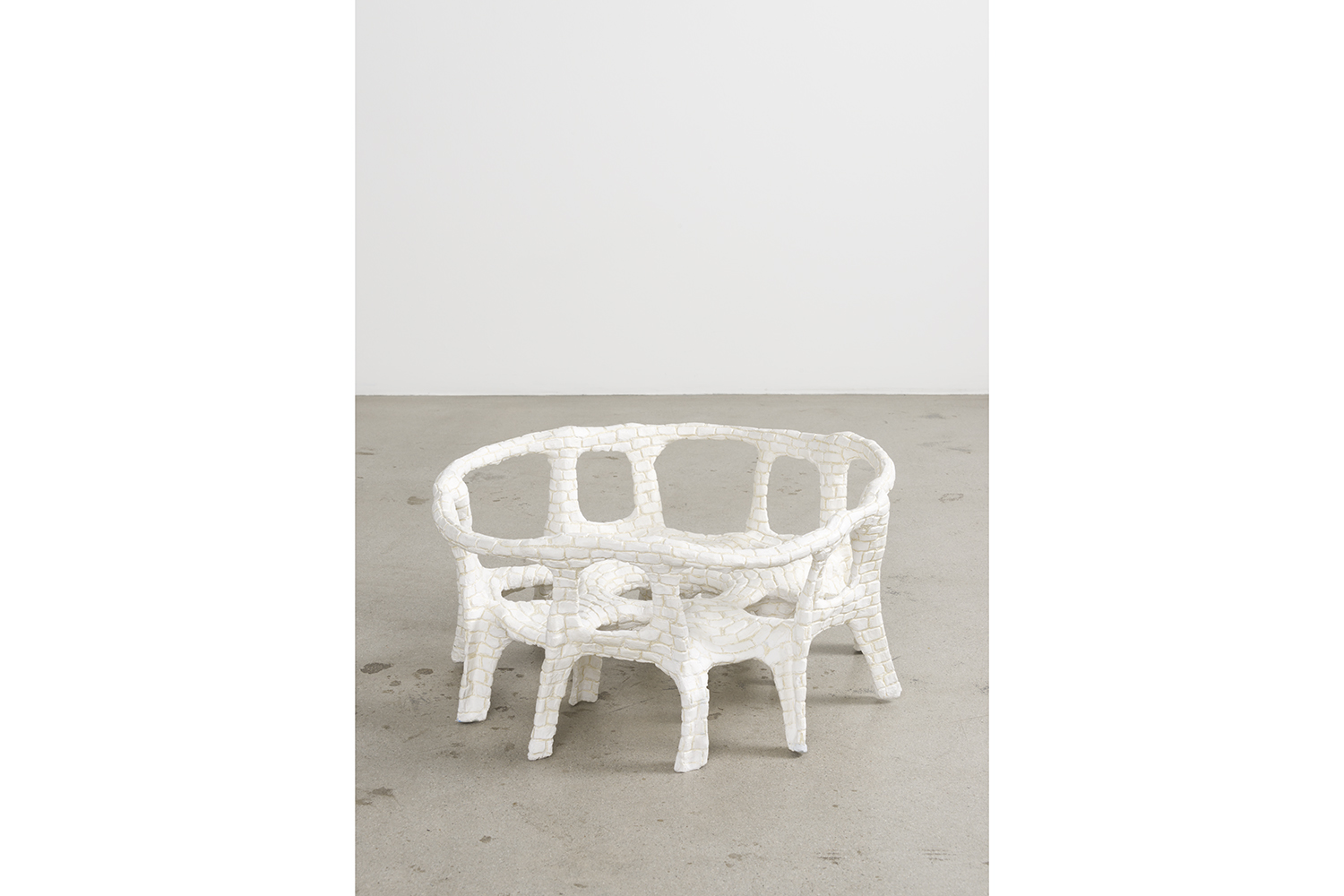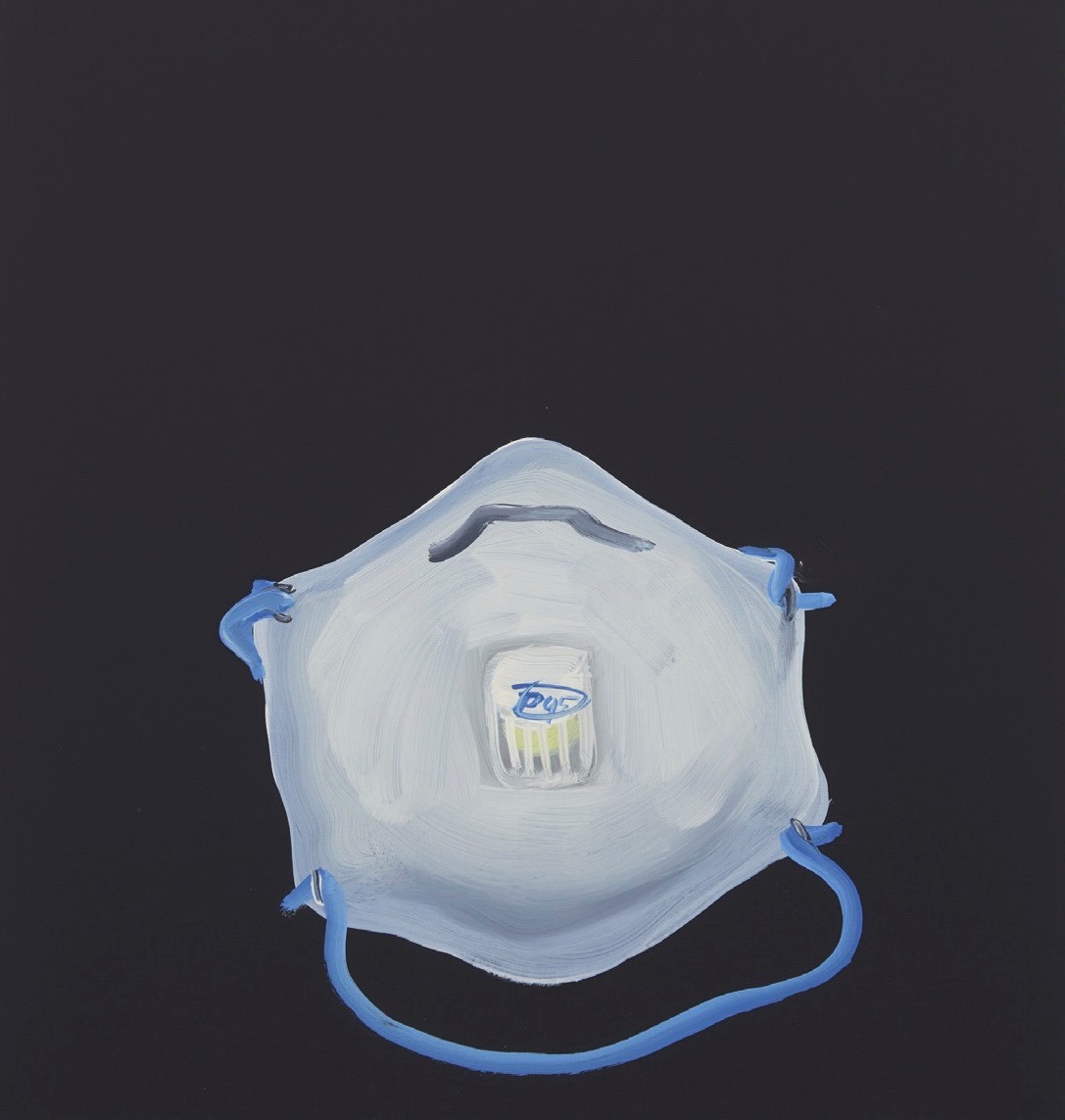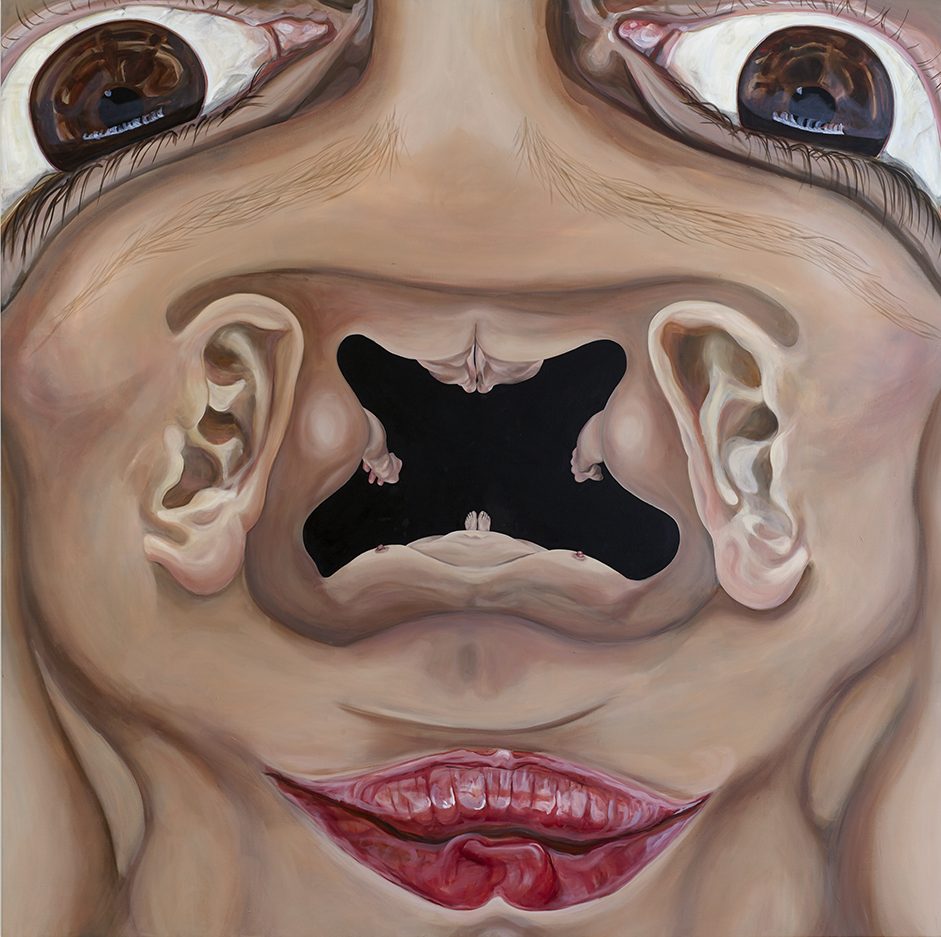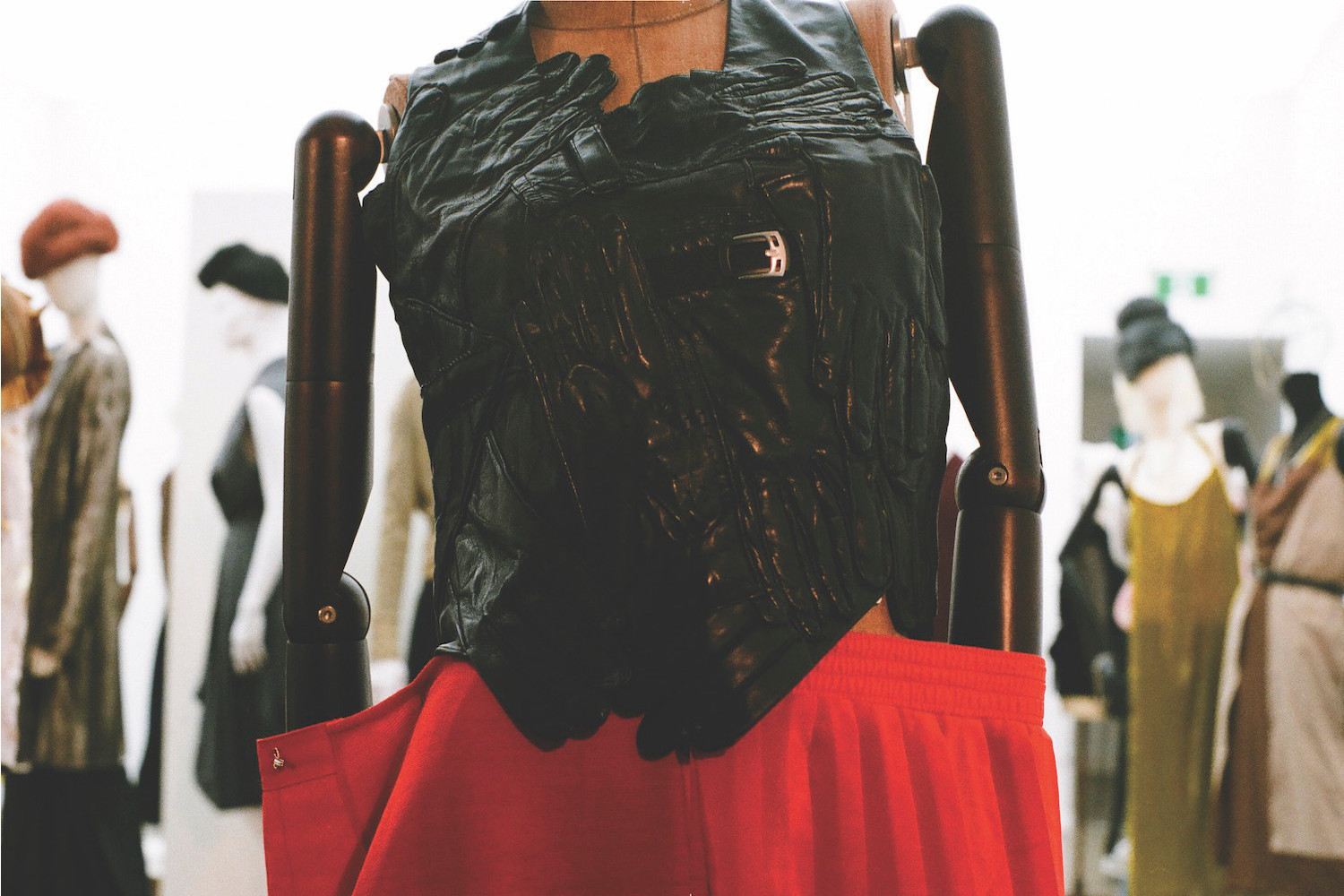The first institutional solo show of Los Angeles–based artist Ann Greene Kelly is marked by a cryptic atmosphere. The exhibition includes sculptures and drawings produced between 2017 and 2020, smartly arranged in the space of ICA’s project room. In Kelly’s work, the practice of the objet trouvé is contaminated by techniques and materials belonging to modernist sculpture. Indeed, amid several items that the artist found around her studio — mattresses, tires, plastic furniture — we can identify techniques such as collage, drawing, and assemblage. Her sculptural compositions are juxtapositions of heterogeneous elements, mostly mass-produced objects or artifacts associated with essential needs. The artist merges, combines, or alters them to transcend their original function, creating structures with an unexpected nature.
For example, Untitled (2019) is a circular mattress presented on a flat plinth with an onyx fountain drain embedded in the center; Untitled (small circular bench) (2017) appears to be a seating unit whose functionality is undermined by its reduced size and circular design; and Untitled (2020) comprises five bisected tires vertically arranged and modified with cans, plaster, fabric, and colored pencil.
The tension that floats on the surface of Kelly’s sculptures seems to originate from a combination of intimate choices and formalist concerns. The aim of these uncanny assemblages is not to suggest new contexts or identities for these discarded everyday objects, but to open up mysterious, unexplored scenarios. Although their allure derives from the familiarity of their forms, the artist’s manipulations contradict our first impression. Volumes and shapes that we might otherwise recognize collapse into elusive compositions that avoid any form of sublimation. Neither allegorical nor illustrative, Kelly’s sculptures give voice to a silent world of things where the body is merely a trace.
Although conceived as distinct elements, the sculptures and drawings are linked by a common sensibility. The latter embrace complex scenes crowded by a wide range of elements: chairs, fruit, windows, magazines, wallpaper, hallways, coffee tables, glasses. The artist reproduces them in a staggered way, following an internal rhythm that is not known to us. Here too, the artist rewrites our relationship with things, exploring new configurations and proposing unprecedented points of view that seem to emerge from the objects themselves.

